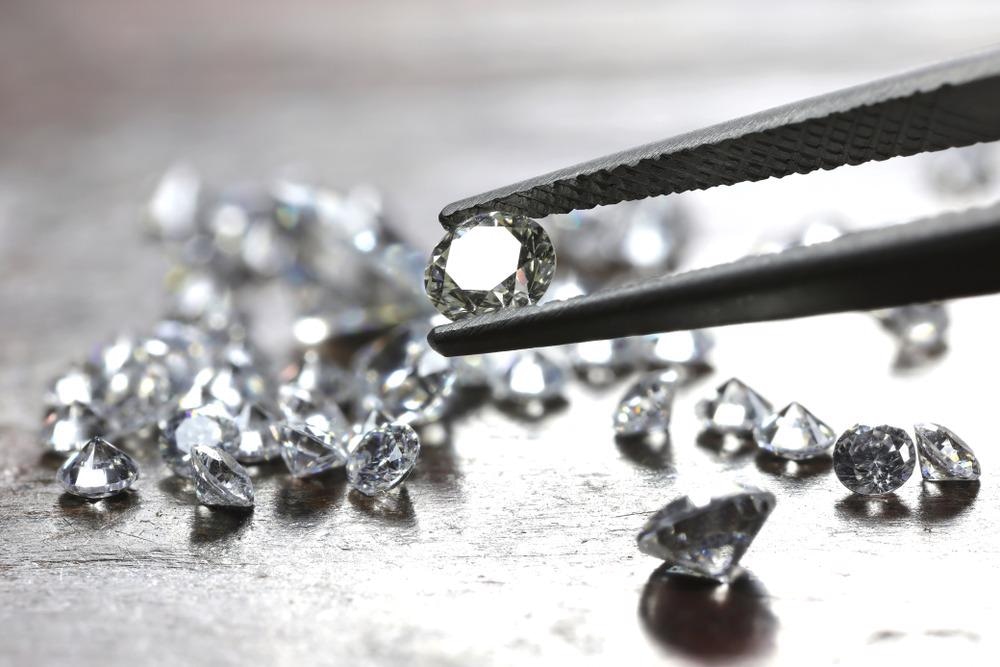While diamond miners have begun to regulate themselves to avoid the worst of the negative impacts of the industry, their operations remain significantly harmful to the environment – chemically and physically identical minerals can be reliably synthesized today as alternatives.

Image Credit: Bjoern Wylezich/Shutterstock.com
How Does Diamond Mining Harm the Environment?
Recent studies confirm that significant environmental damage is still caused by mines supplying the remaining demand for mined diamonds.
A 2019 report on diamond mining in Sierra Leone found that mines’ physical and chemical outputs were the source of serious harm to the local environment. This pollution has made farmland unfit for crop production, contaminated groundwater, dried up water wells, and cracked the walls of houses.
Noise pollution was also found to be at a dangerous level around diamond mines in the region.
The wider impacts of this environmental damage were observable as well. Health problems caused by occupational injuries combined with higher rates of incidence of diseases like diarrhea and malaria took their toll on communities around diamond mines.
The most significant impact found in the report was the diamond mining industry’s negative effects both on the availability of water sources and water quality in the local area.
Water scarcity was attributed to the huge depth of diamond mine pits, lower than the water table and the bottom of local wells. This also affected water quality, which in turn is a factor in the higher incidence of cases of malaria, respiratory infections, and skin diseases in local communities.
The mines also caused airborne emissions at each stage of their cycle, and especially in the exploration, development, construction, and operation stages. Waste piles from mining operations contain small-sized particles that get easily picked up and dispersed by the wind, polluting nearby ecosystems.
In a 2020 study, the environmental impacts of diamond mining in the Democratic Republic of Congo (DRC) were evaluated. The study focused on alluvial diamond mining.
Why lab-grown diamonds are better than mined diamonds
Video Credit: DW Planet A/Youtube.com
Alluvial diamonds were eroded from their primary source (Kimberlite) naturally and then deposited in a new environment by waterways. They are found in riverbeds and floodplains.
Mining alluvial diamonds causes significant environmental damage. Deforestation, river pollution, water scarcity, and dangerous working conditions are all common in the mines analyzed for this study.
Synthetic Diamonds are Materially Identical to Mined Diamonds
Chemically and physically, synthetic or lab-grown diamonds are identical to diamonds retrieved from mines. They are made in the exact same way from the exact same material: pure, crystallized carbon in an isotropic three-dimensional structure.
Experts in precious stones are unable to tell the difference between synthetic and mined diamonds, although the letters “LG” (lab-grown) are commonly inscribed at the base of synthetic stones.
In nature, diamonds are formed deep underground as heat and pressure exert themselves over carbon over a very long time. Subterranean volcanic eruptions move them closer to the earth’s surface, where they are excavated.
In the laboratory, this process is recreated with a diamond fragment placed in a sealed chamber. The chamber is heated to extreme temperatures, comparable to temperatures on the surface of the sun.
Gases fill the chamber and add crystallized carbon layers to the diamond over a period of a few days.
In 2018, the United States government’s Federal Trade Commission (FTC) made a landmark ruling that included synthetic diamonds in the same definition as mined diamonds.
How are Synthetic Diamonds used Today?
The numerous applications for synthetic diamonds today are testament to the fact that they are a like-for-like replacement for mined diamonds, and should eradicate the need for an environmentally and socially catastrophic diamond mining sector entirely.
Industrial applications of synthetic diamonds make use of their hardness. Machine tools and cutting tools especially make use of this property, using diamond-tipped edges to polish, cut, or wear away any other material.
Diamond-tipped drill bits, diamond powder abrasive, and other uses in machining and tools make up the largest demand for synthetic diamonds in the industry.
Further Reading: Reliable Diamond Analysis Performed By FTIR Spectroscopy
In electronics, synthetic diamonds are used as heat sinks for high-power lasers, laser arrays, and high-power transistor devices. This is due to their high thermal conductivity which – as is rarely the case in most materials – coexists with negligible electrical conductivity.
Hard, chemically inert synthetic diamonds with high thermal conductivity and a low coefficient of thermal expansion (CTE) are also well-suited for applications in advanced optics. There is no other material that beats synthetic diamonds for performance in windows transmitting infrared and microwave radiation.
The falling price point and increasing quality for synthetic diamonds has led to many optics systems replacing zinc selenide with pure carbon in high-power CO2 lasers’ output windows.
Synthetic diamonds are being explored as potential semiconductor materials as well. Doping synthetic diamonds with boron or phosphorus particles produces a compound with semiconductor properties, and may form the basis of less harmful methods of semiconductor manufacturing in the future.
There is no reason to buy a synthetic diamond, other than the vagaries of fashion and speculative investment. Neither of these is cause enough for the significant environmental and social damage caused by the diamond mining industry.
References and Further Reading
Galli, N. et al. (2020). Environmental impacts of diamond mining in the Democratic Republic of Congo. EGU General Assembly 2020. Available at: https://doi.org/10.5194/egusphere-egu2020-20634.
Kallon, H. D. S. (2019). The Impact of Diamond Mining on the Environment. Njala University. Available at: https://www.rroij.com/open-access/pdfdownload.php?aid=87423.
Milman, O. (2020). Are laboratory-grown diamonds the more ethical choice to say 'I do'? Guardian. Available at: https://www.theguardian.com/lifeandstyle/2020/mar/10/diamonds-lab-grown-climate-change.
Disclaimer: The views expressed here are those of the author expressed in their private capacity and do not necessarily represent the views of AZoM.com Limited T/A AZoNetwork the owner and operator of this website. This disclaimer forms part of the Terms and conditions of use of this website.